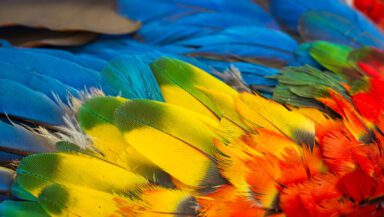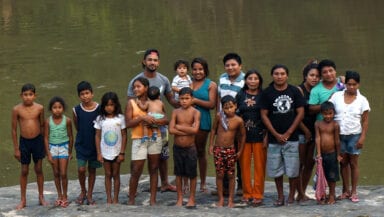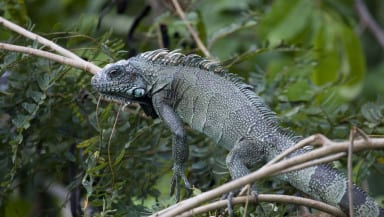Content warning: this article includes a photo of an injured animal that some people might find upsetting.
Where is the Pantanal and what is it?
Firstly let’s take a look at where the Pantanal is. The Pantanal extends some 150,000 sq km through the heart of South America, crossing central-western Brazil, and spilling over the border into Bolivia and Paraguay.
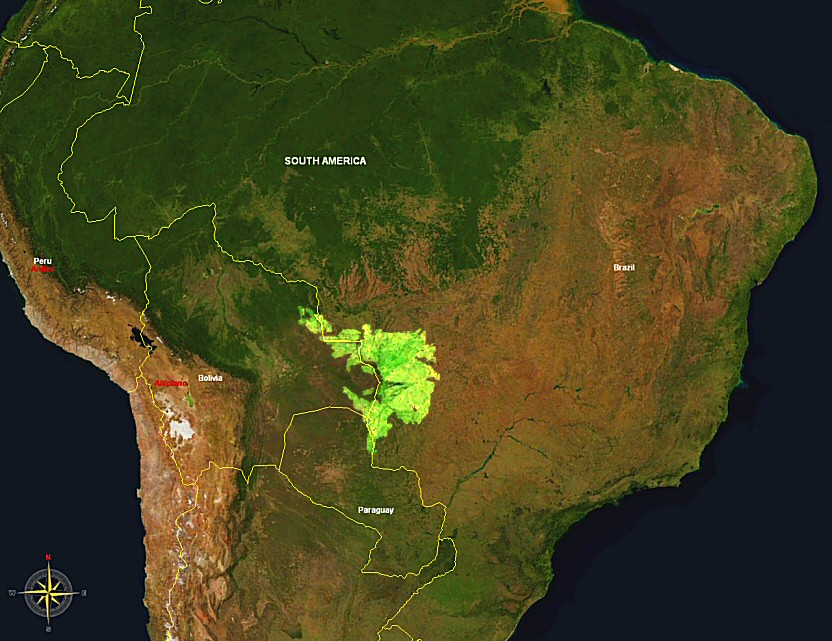
The Pantanal is a UNESCO World Heritage Site and the biggest tropical wetland in the world. During the summer rainy season, rivers break their banks and flood the surrounding lowlands. This creates a stunning patchwork of shallow lakes, marshes, grasslands and forests.
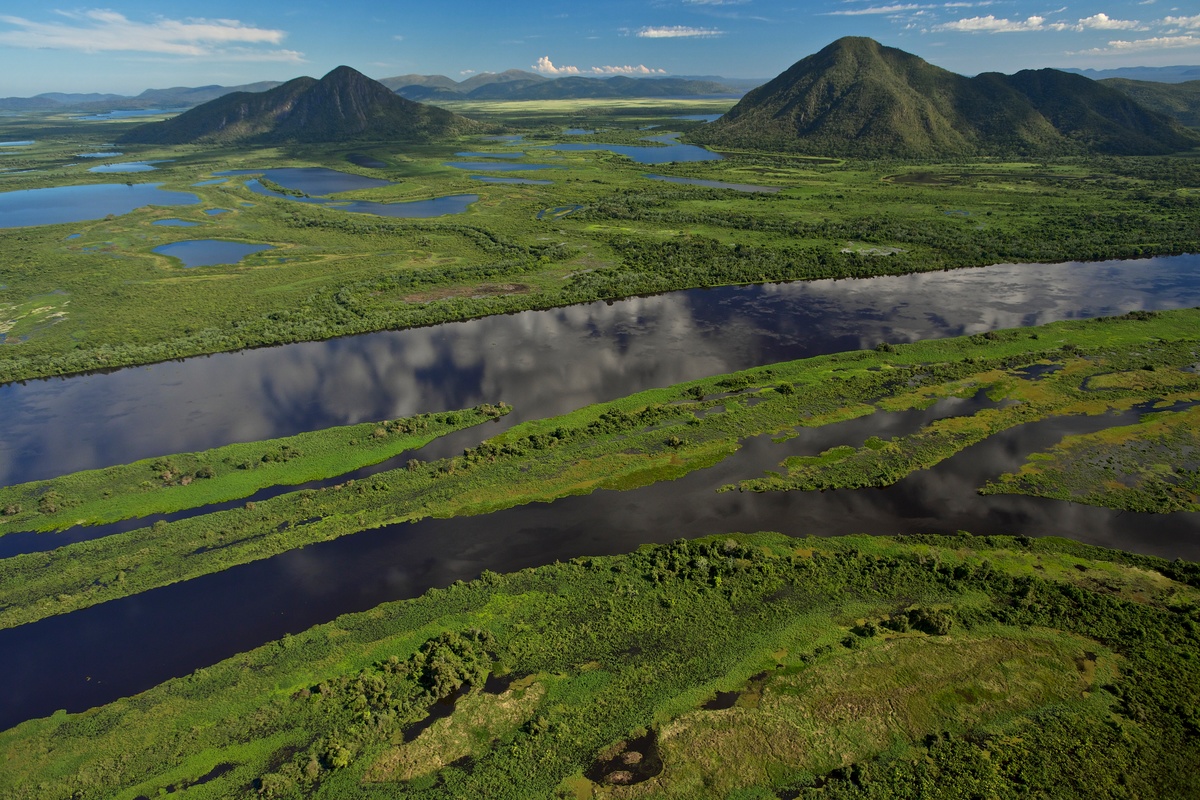
Aerial view of Pantanal Wetlands in Brazil. © Markus Mauthe / Greenpeace
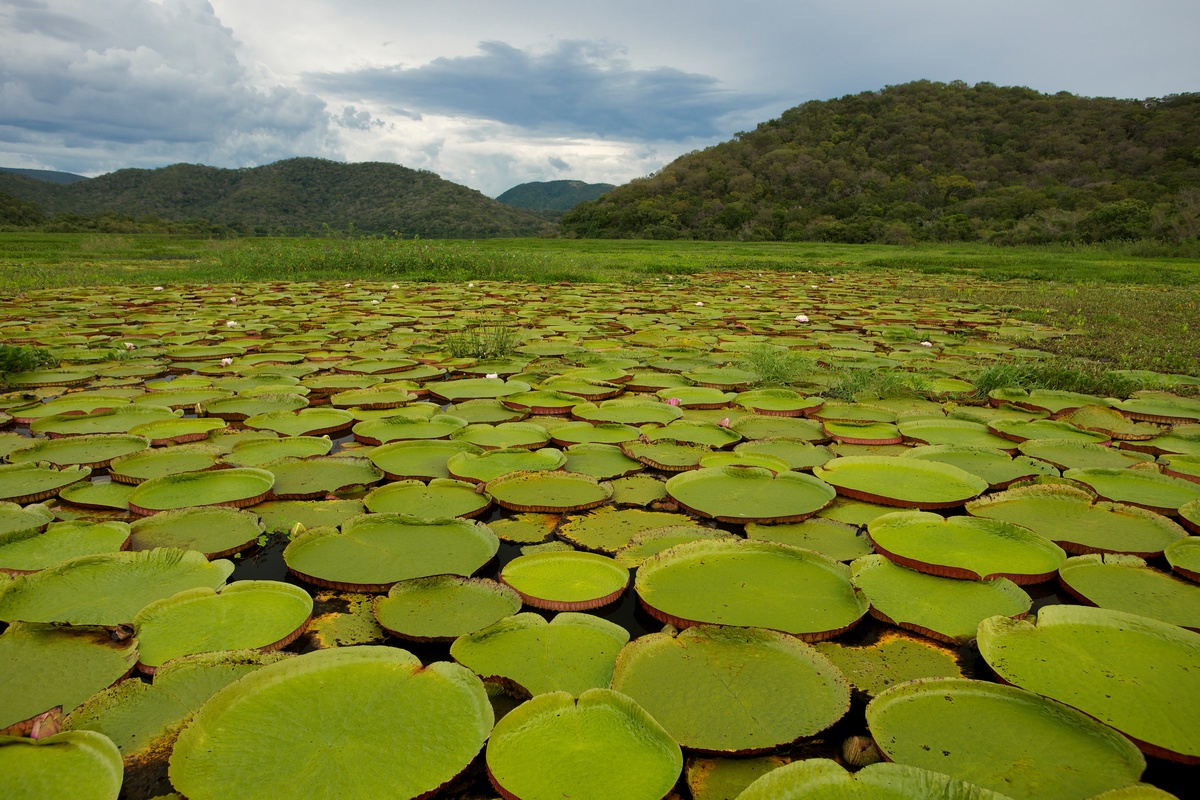
Water lilies in the Pantanal Wetlands in Brazil. © Markus Mauthe / Greenpeace
What makes the Pantanal so special?
The Pantanal is famous for being home to an incredible variety of wildlife. Thousands of different species hustle and bustle in the Pantanal, and many of them are endangered.
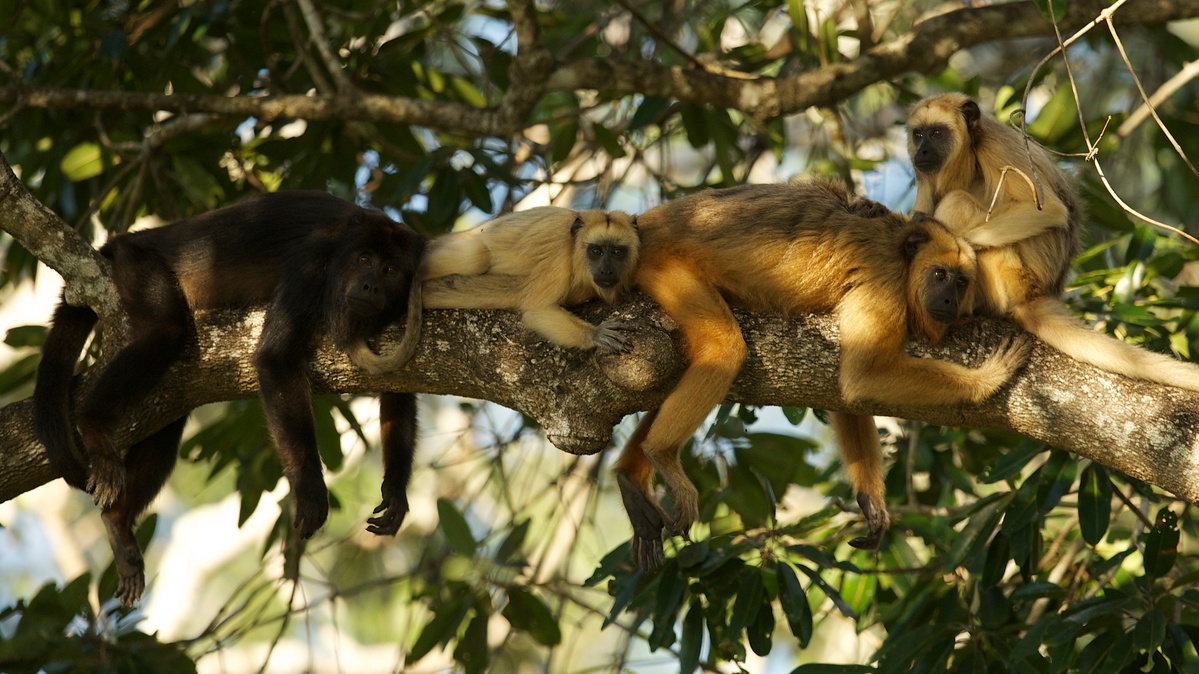
Black Howler monkeys. © Markus Mauthe / Greenpeace
One of the Pantanal’s most famous residents is the jaguar. The Pantanal is the second largest jaguar habitat in Brazil (after the Amazon rainforest), with around 5000 animals.
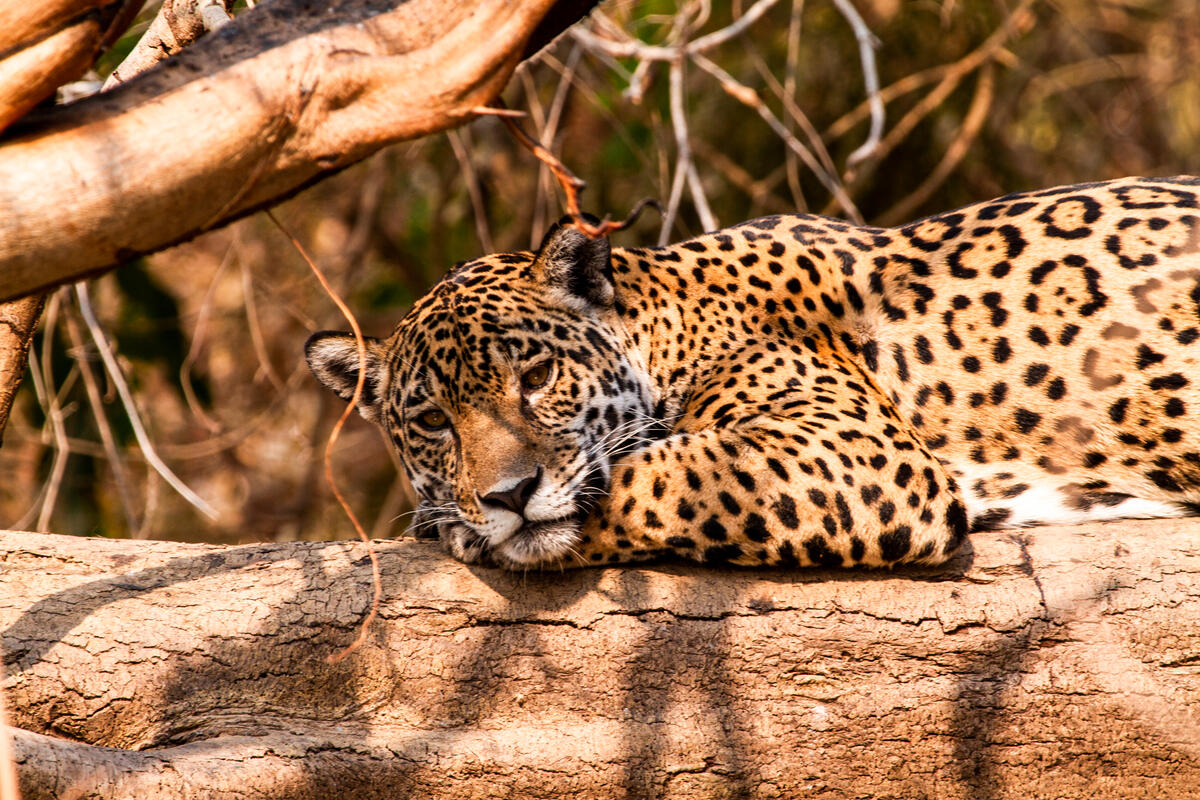
Around 5000 jaguars live in the Pantanal. © Leandro Cagiano / Greenpeace
An amazing variety of birds also depend on the Pantanal. Some stay in the wetlands all year round, while others come and go with the changing seasons.
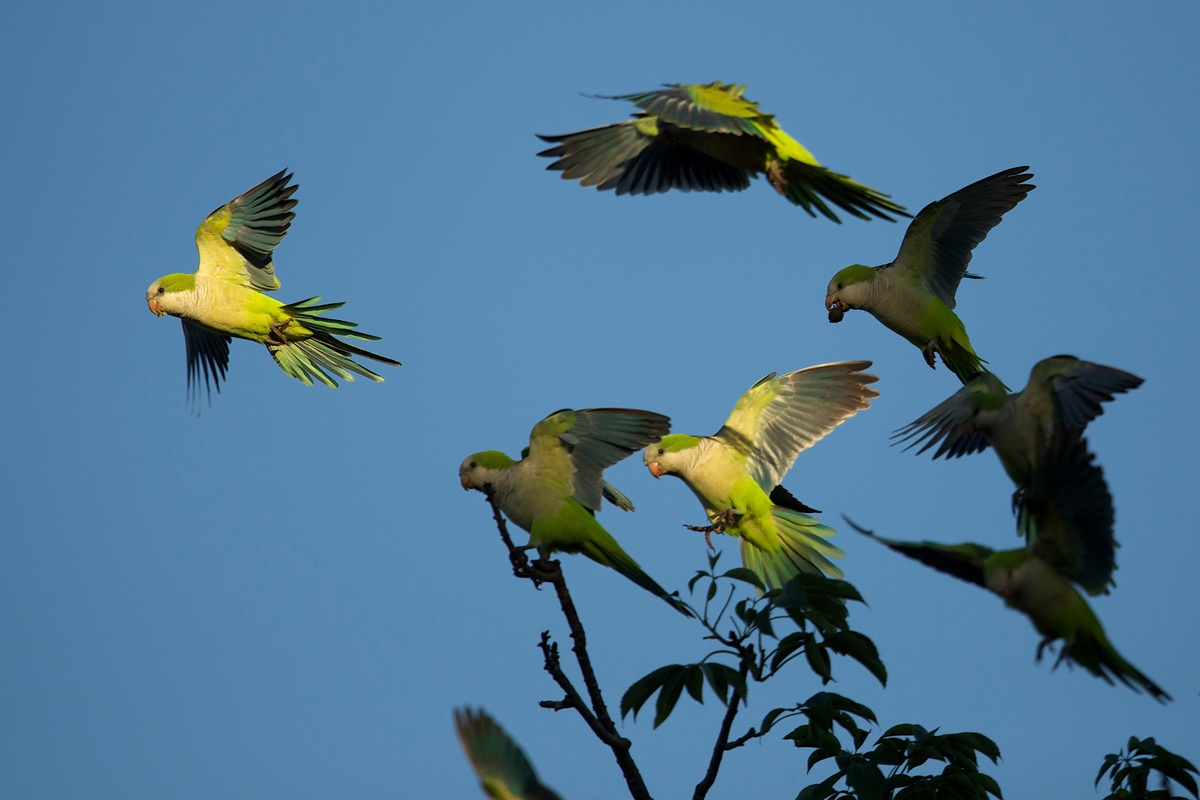
Parrots © Markus Mauthe / Greenpeace
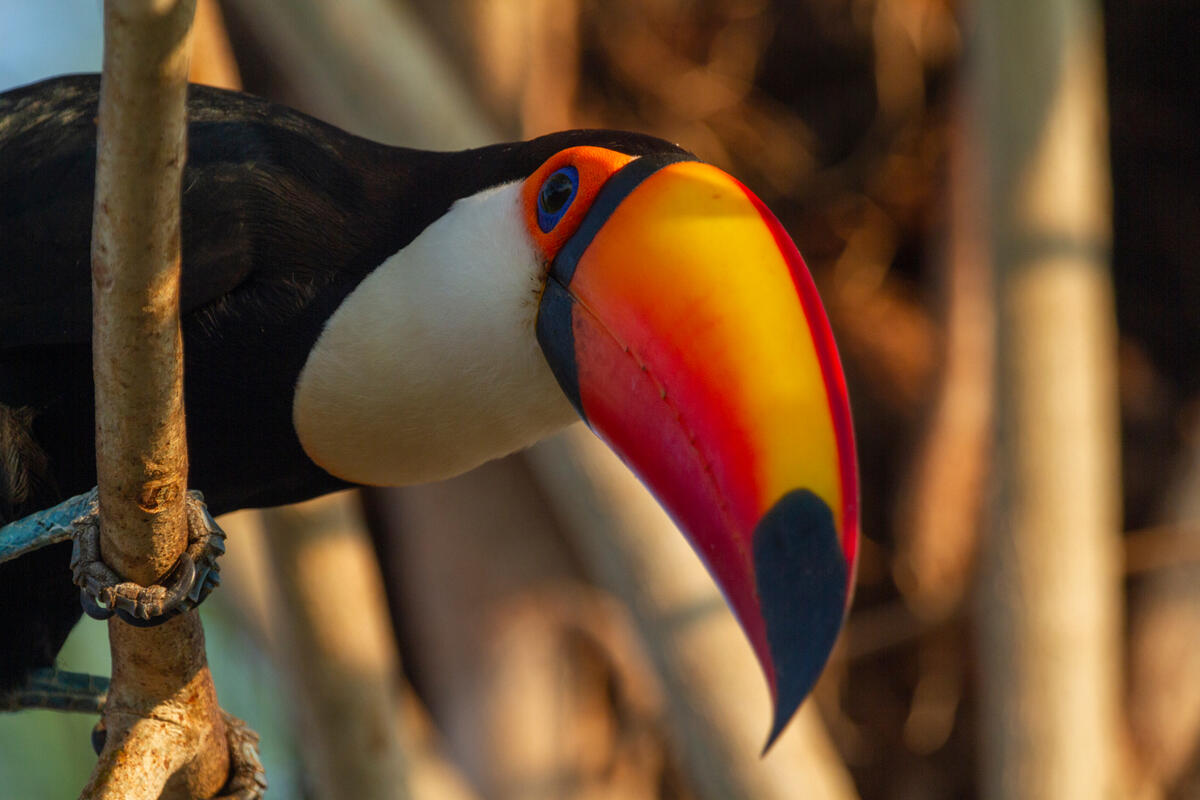
A Toucan. © Leandro Cagiano / Greenpeace
It’s not only wildlife that relies on the Pantanal, the wetlands support around 1.5 million people across Bolivia, Paraguay and Brazil. From towns of up to five thousand families, to many different Indigenous communities, their livelihoods all depend on the health of the area.
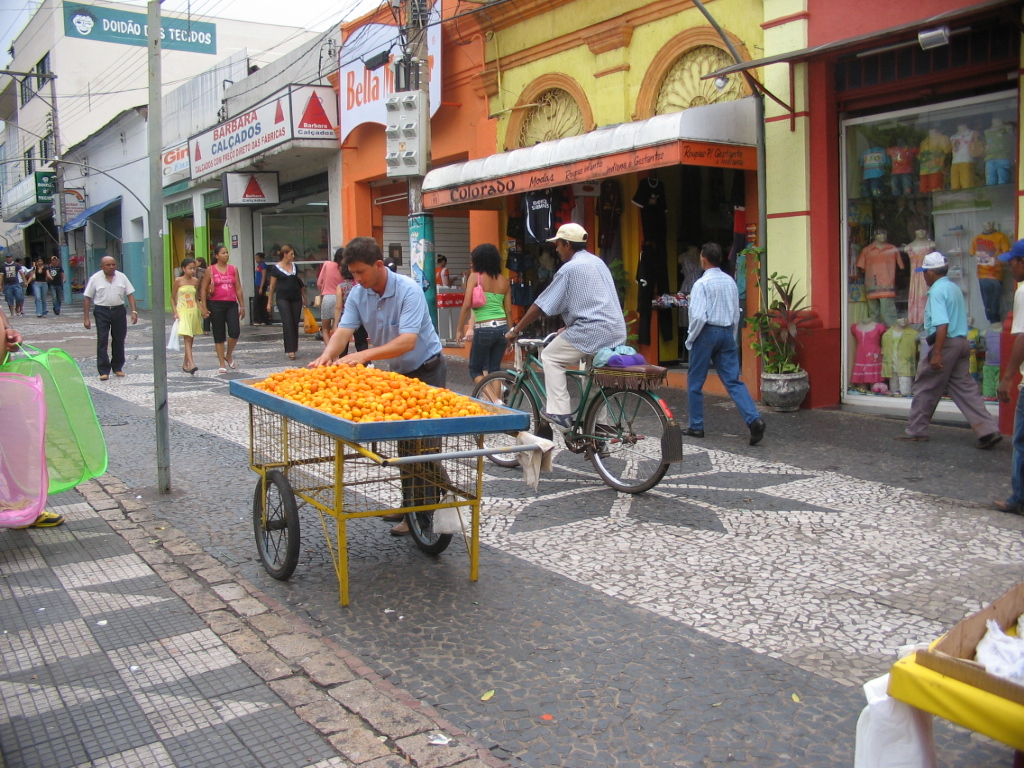
A stallholder sells pequi (a fruit that’s popular locally) in the Pantanal town of Cuiabá Mateus Hidalgo (CC-BY-SA)
Many people in the Pantanal live off the land. They farm and fish, selling what they catch or grow, and eating the rest.
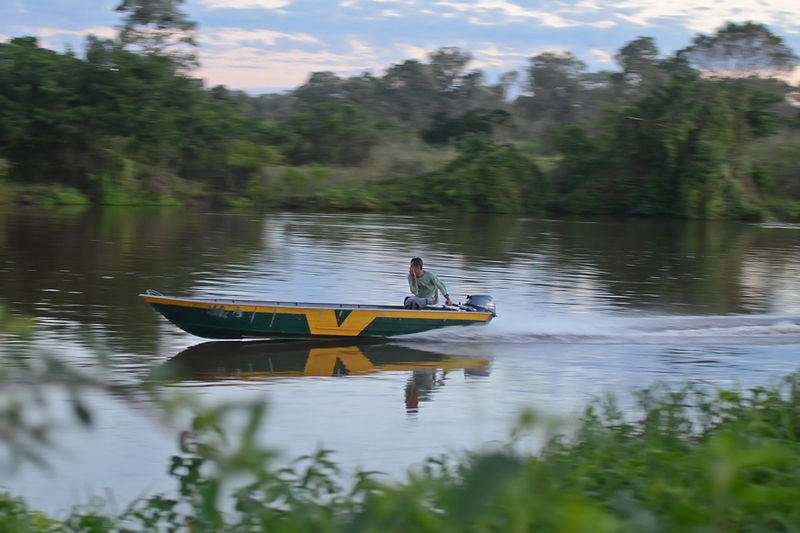
A boatman in the Pantanal Geoff Gallice (CC-BY)
Some also make a living through tourists visiting the area for the incredible scenery and wildlife.
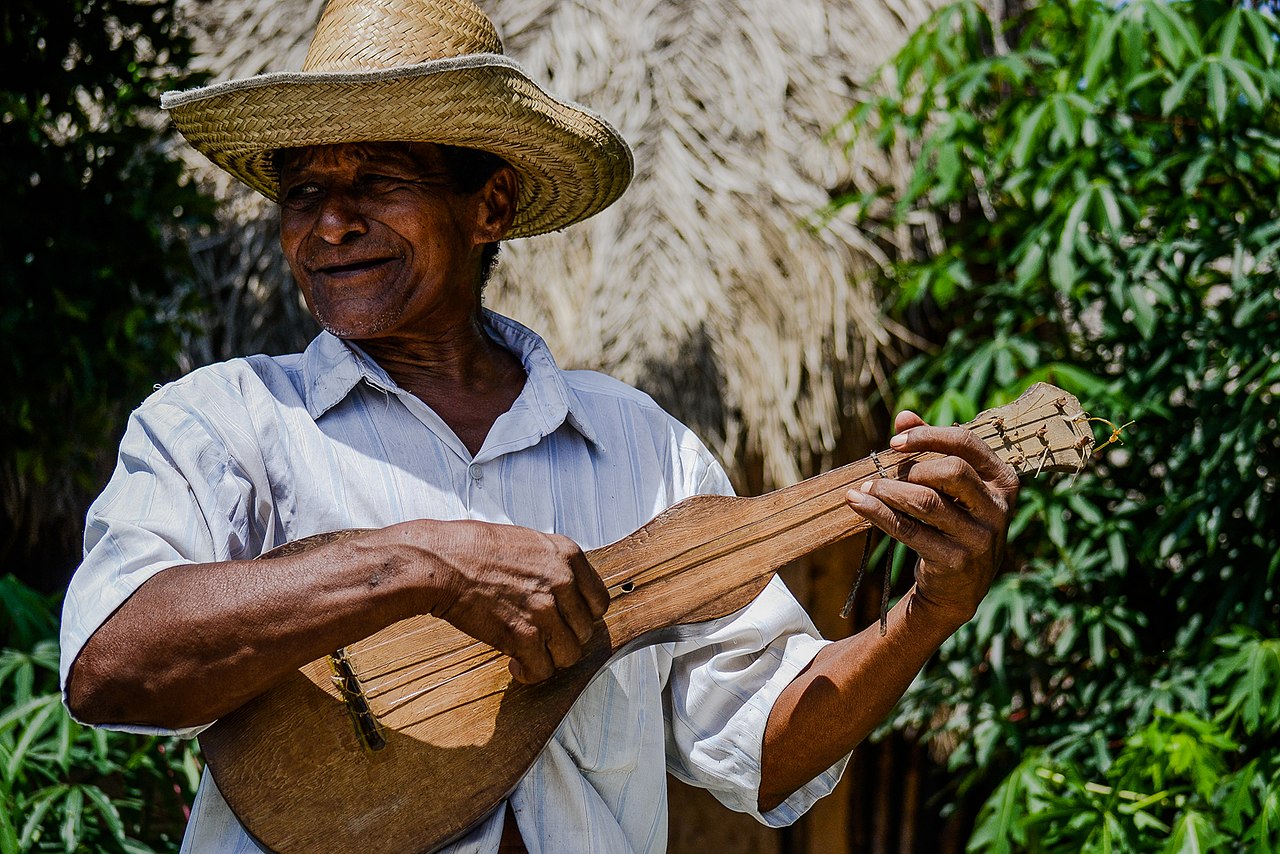
Pantanal dweller Seu Dito Verde is a fisherman, storyteller, and musician. He lives in an isolated wooden house on the banks of the Cuiabá River. Paulisson Miura (CC-BY)
Because it holds so much water, the Pantanal also provides vital flood control for millions of more people living downstream.
This year has seen the worst fires ever recorded in the Pantanal
It might shock you to hear that nearly a quarter of the Panantal has already burned this year. That’s an area eleven times larger than London.
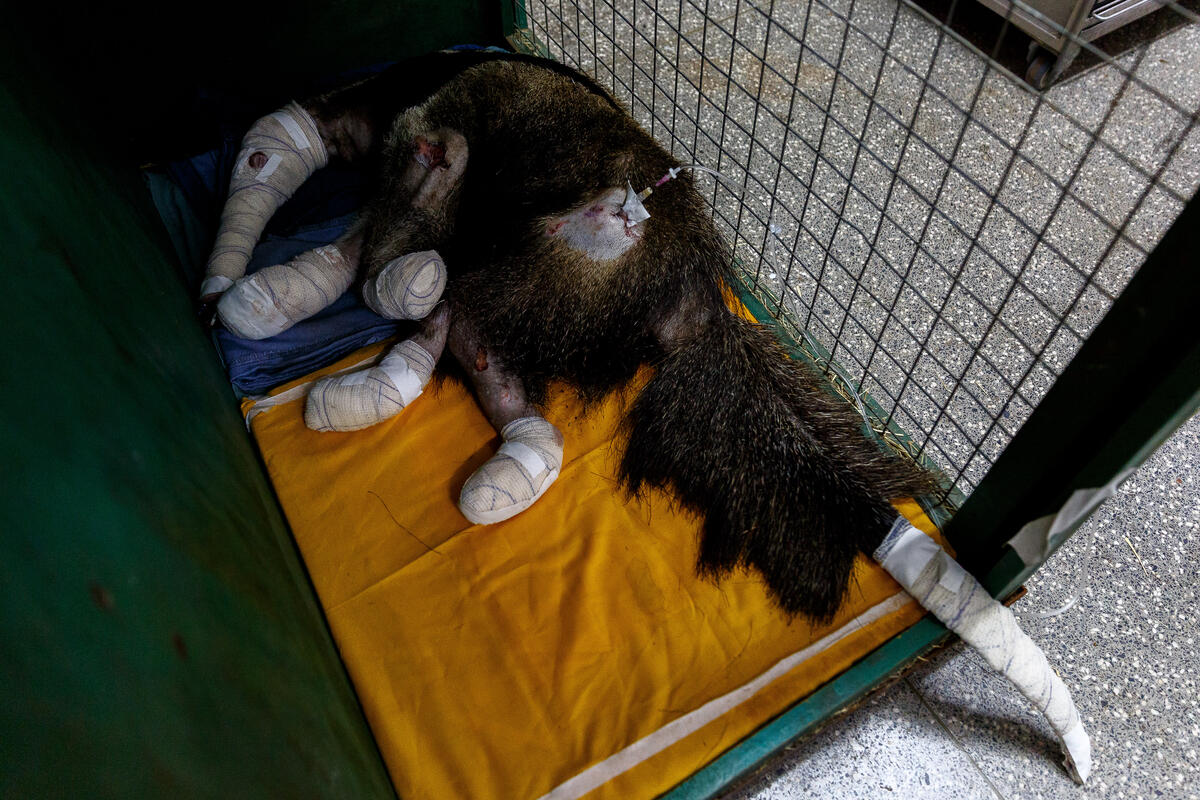
A giant anteater recovers after being rescued from a fire in the Pantanal in October 2020 © Diego Baravelli / Greenpeace
The inferno has had a devastating impact on the region’s wildlife. Indigenous communities have also been heavily affected. Half the Indigenous territories in Brazil’s Pantanal have been razed by the fires, and many communities have lost their homes and livelihoods.
What caused the fires in the Pantanal?
Illegal deforestation in the Pantanal more than doubled in the first six months of 2020. An investigation has shown the fires started in cattle ranches in the area. Farmers and land grabbers often illegally set fires to clear land for raising cattle or to grow animal feed. The longest and worst drought for 47 years has also made the fires worse.
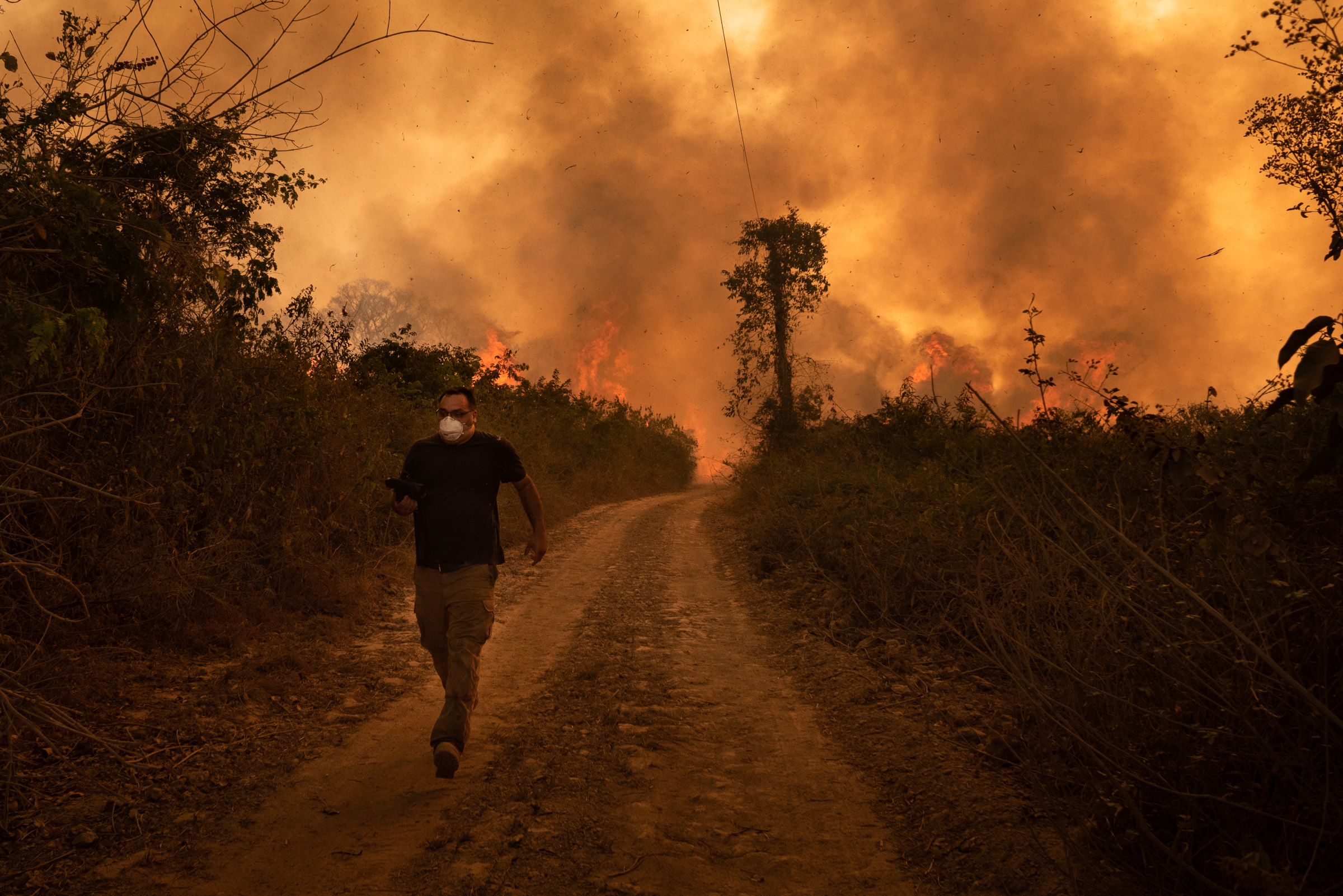
Residents flee as a forest fire burns out of control in the Pantanal Gustavo Basso/NurPhoto
It’s not only Pantanal that’s burning – the Amazon is too. And these two ecosystems are closely linked. The Amazon rainforest creates “flying rivers”, which are humid air currents. They travel across land in the air and fall as heavy rains over the Pantanal.
As the Amazon is chopped down, burnt and split up, its ability to create these “flying rivers” decreases. This reduces the rainfall over the Pantanal and the rest of the continent.
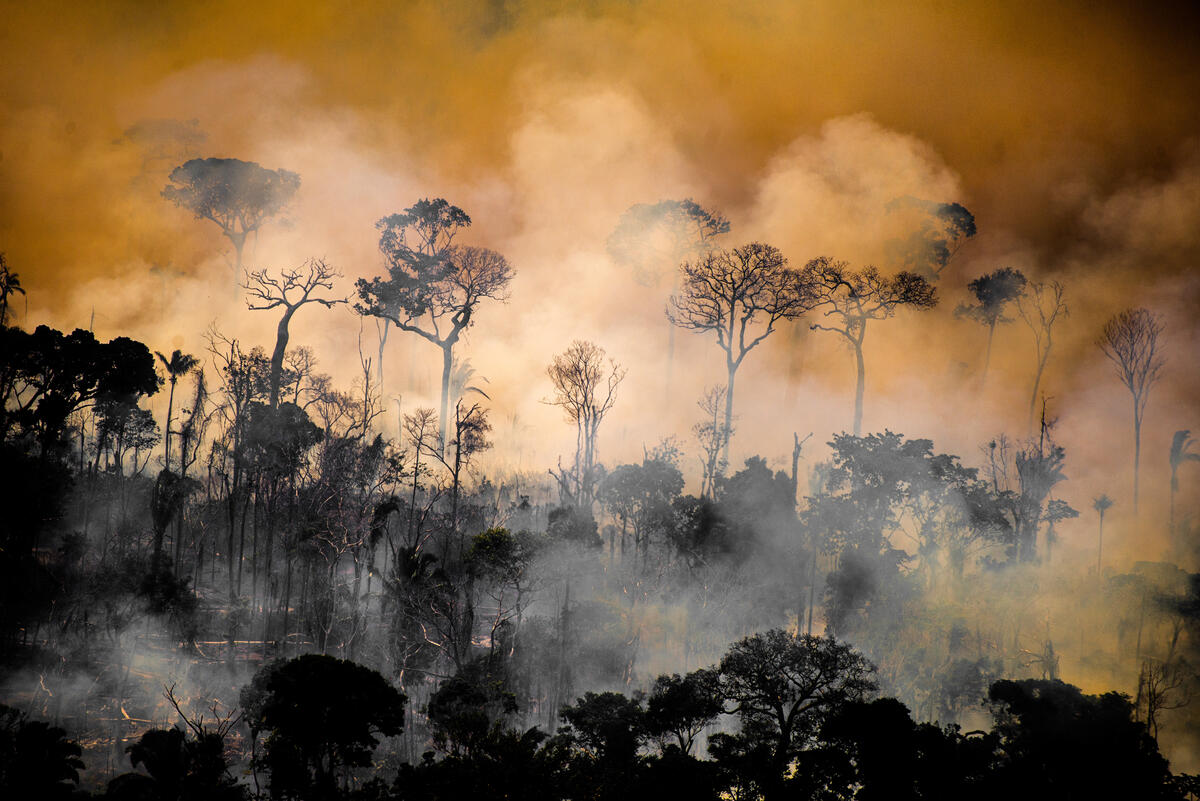
Trees and land smoulder in the aftermath of a forest fire in the Amazon. © Christian Braga / Greenpeace
Nature is closely connected and held together in a fine balance. Disrupting one ecosystem has a knock-on effect elsewhere. What’s happening in the Pantanal is yet another example of this.
Industrial meat is the biggest cause of deforestation globally. While the Pantanal, Amazon and other forests are burning, UK brands like Tesco and Burger King are still buying meat and dairy from companies linked to the destruction. The even bigger picture is that these companies sell enormous amounts of industrial meat. This just can’t be sustained if we want a healthy planet for future generations.
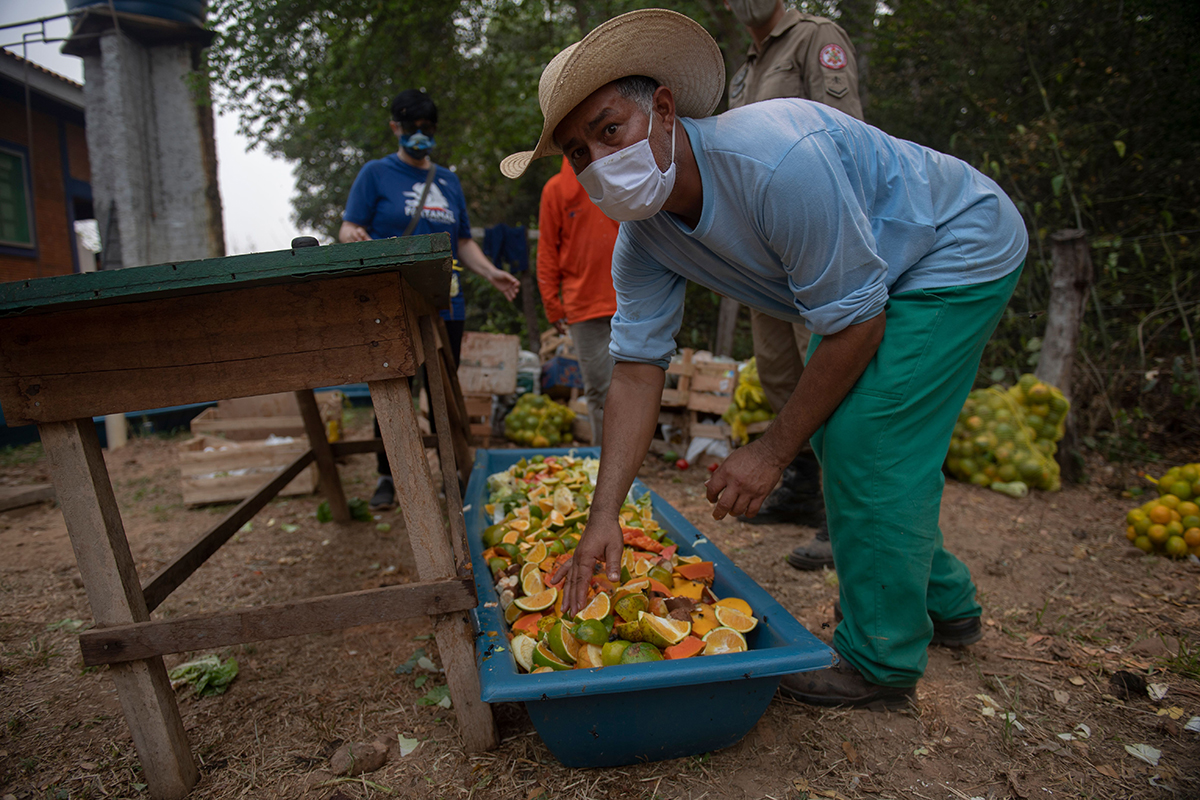
Locals organize food to be distributed to animals rescued from record-breaking forest firest in the Pantanal Mauro Pimental/AFP via Getty Images
How to protect the Pantanal and the Amazon.
Eating a mostly plant-based diet and much less meat is something we can do as individuals to help protect forests. But it’s not only down to us!
Supermarkets and fast food companies must stop buying meat from forest-destroying companies right now. They also need to replace at least half the meat and dairy on their shelves with plant based food in the next few years. By doing this they can play their part in ending our dependence on industrial meat – protecting forests, our health, wildlife and the planet.

